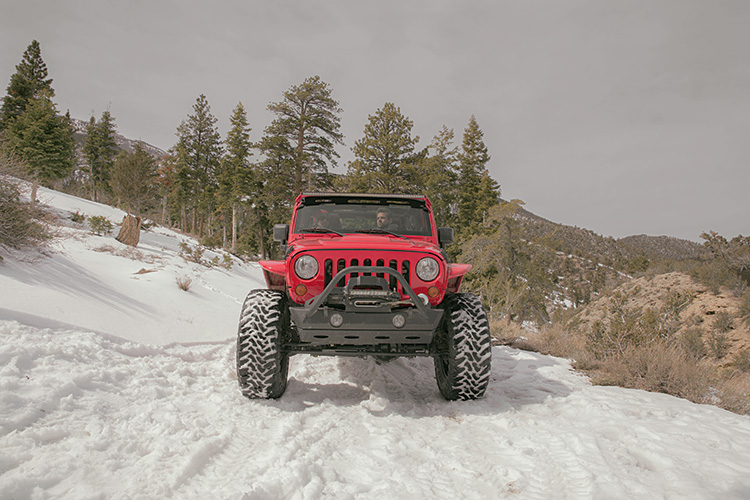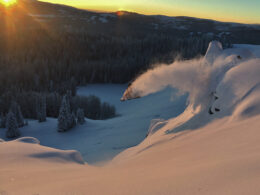When the snow flies, everyone knows it’s best to slow down and follow the recommended safe-driving tips to avoid ending up in a snowbank or worse. Similarly, precautions also need to be taken to ensure your vehicle is properly winterized so you don’t end up stranded in frigid weather. Here are four important areas to address before Old Man Winter comes calling.
While it may seem counterintuitive, a mix of antifreeze and water will have a lower freezing point than antifreeze alone. The common 50/50 antifreeze/water ratio is typically effective to ambient temps of minus 34 degrees Fahrenheit; bumping the ratio to 70 percent antifreeze/30 percent water can bring it as low as minus 84 degrees F. Antifreeze that’s pre-diluted to a 50/50 ratio is readily available at most retailers and very convenient if you don’t need to vary the mix.
Experts recommend flushing your coolant system every two years. Not sure when it was done last? When the engine is cold, open the coolant tank (not the radiator) and look at the fluid. If it’s still a vibrant color it’s likely still good. A muddy color indicates it’s time for a change. Make sure the fluid level is topped up to the “cold” line marked on the bottle.
You can also measure the coolant’s freezing temperature with a hydrometer, available at most auto parts stores. If the freezing temp is higher than what’s typical for your conditions, it’s time to change the fluids.
Cold temperatures will thicken oil, making it difficult for it to pass through an engine’s small passages and do its lubrication work. Check your owner’s manual: Most vehicle makers recommend multi-viscosity oils with a wide enough range that the lighter viscosity level (the lower number with the “W”—for winter—next to it) will function in sub-zero weather. A 5W20 oil, for example, maintains its flow properties down to minus 22 degrees F, and a 10W30 still flows at minus 4 degrees F. Some makers do recommend stepping down that winter number (from a 10W30 to a 5W30, for example) if the oil used during the other three seasons doesn’t provide good enough cold-weather flow.
Do you need winter tires? If you live in an area with occasional snow flurries that don’t often accumulate, or roads that are rarely icy, then a mud-and-snow (M+S) tire may be fine. Some M+S tires have earned a rating, represented by a mountain-snowflake symbol on the sidewall, that indicates the tire “meets required performance criteria in snow testing to be considered severe snow service-rated,” per the experts at Tire Rack.
Those tests do not address braking or turning performance in snow, or any kind of performance in icy conditions. So, a tire with a mountain-snowflake symbol is different from a dedicated winter tire, which is made using rubber compounds formulated to stay flexible in sub-zero temperatures. Winter tires also have treads with increased depth, and extra biting edges cut into the tread for grip in snowy, slushy and icy conditions.
To preserve your truck’s acceleration and handling characteristics, it’s important to mount winter tires at all four corners. Yes, that means buying an entire “extra” set of tires. And good quality winter tires will cost as much as premium three-season tires. But those winter tires should last through several seasons, and while the winter tires are mounted, the three-season tires in storage are getting no wear, essentially extending their life.
For driving on ice, one of the best ways to enhance traction is with studded snow tires. But studs damage road surfaces (when left on after a thaw), so much so that their use is limited or prohibited in several states. To find out if they’re allowed in your area, check this state-by-state list compiled by Tire Rack.
4x4s require chains on all four tires to avoid compromising the truck’s handling. Test fit them on the truck before the first snowfall; you don’t want to learn they don’t fit when you’re pulled off to the side of the road in a snowstorm.
Related articles that may interest you:
4×4 Master Class–How to Conquer Snow and Ice
4WD Survival-5 Things to Have When You’re Really Stuck
Learn to Drive Your 4×4 Like a Pro
10 Best 4×4 Vacation Adventures in the USA









